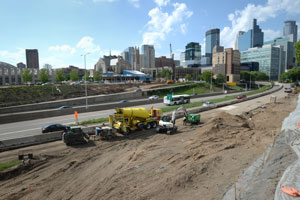Stewardship
Taking care of what we have
Sustainable investments in the transportation system are protected by strategically preserving, maintaining, and operating system assets.
Objectives
- Efficiently preserve and maintain the regional transportation system in a state of good repair.
- Operate the regional transportation system to connect people and freight efficiently and cost-effectively to destinations.
Strategy summary
- The transportation system is extensive and represents a significant investment over multiple generations. Most resources in this plan will be dedicated to operating, maintaining, and rebuilding what already exists.
- To maximize investments, this plan supports making the system more efficient and effective and providing for the best user experience the region can afford.
- The region needs to focus on investments that have the greatest benefit for all users of the transportation system: residents, businesses, and people of all ages, abilities, and backgrounds.
A significant portion of funding is spent every year for maintenance, repair and replacement, and operation, of the existing system. Continued and enhanced system maintenance, repair, and preservation will increase the resiliency of regional transportation infrastructure.

Maintenance
This includes repairing buses and light rail cars, mowing, and maintaining landscaping, clearing snow, ice, and debris from roadways, and building and maintaining transit facilities, sidewalks, and trails.
Repair or replacement
This focuses investments on preserving pavement, bridges, and infrastructure to support their safe and efficient use.
Operations
This includes MnDOT’s Freeway Incident Response Safety Team that helps people stranded on the roadway; traffic signal operations; and operation of the variable message signs and advisory speeds through the regional traffic management center. Transit operations include the day-to-day service of transit vehicles and facilities.
Stewardship also means getting the most out of transportation system investments. by integrating other improvements in preservation and maintenance projects at a lower cost. These improvements can lead to better user experiences − safer roads, less congestion, or better sidewalk connections. Capital improvements can also create efficiencies in long-term operations and maintenance. For example, investing in automated card-swipe transit fare technology creates long-term cost savings by speeding up service and creating a better customer experience.
Measuring performance
Performance measures that will be used to measure successful stewardship of the transportation system include:
- Roadway pavement conditions
- Bridge conditions
- Condition of transit infrastructure — state of good repair